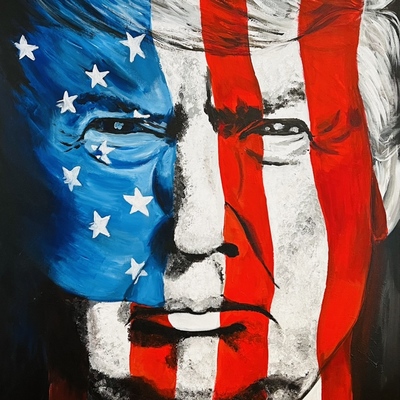Stay informed on the latest Truth Social posts from Donald Trump (@realDonaldTrump) without the doomscrolling. Consider it a public service for your mental health. (Why?)
- Average family income gained ten times more under Trump than under Joe Biden.
- Every income group experienced better performance under Trump than under Biden.
- The economic difference between the two administrations was by a wide margin.
The post offers a retrospective comparison of economic performance under different presidencies, citing income growth. While economic rhetoric can broadly influence sentiment, this specific statement is a past-focused political claim rather than a new policy proposal, a current economic indicator release, or a specific company mention. Its direct, immediate impact on the S&P 500 is likely to be minimal, although it contributes to the broader political and economic narrative.
The post focuses solely on domestic economic performance comparisons and contains no elements related to international conflict, threats, or military actions.
- Commodities: No direct impact. The post discusses past income growth, not supply/demand shocks, inflation expectations, or geopolitical tensions that typically move commodities like Gold or Oil. Short-Term Watchlist: XAU/USD price action, oil inventory reports, headlines on Iran/OPEC. Medium-Term Focus: Inflation trends, Fed policy, China industrial data, USD trajectory.
- Currencies (Forex): No direct impact on DXY or major pairs. The post is a retrospective domestic economic claim, not a new Fed policy hint, risk sentiment driver, or trade war development. Short-Term Watchlist: Fed speakers, Treasury yields, global risk sentiment. Medium-Term Focus: Central bank divergence (Fed vs ECB/BoJ), global growth differentials, dollar liquidity cycles.
- Global Equities: Minimal direct impact. The post is a political campaign statement based on past economic performance. It does not introduce new information or policy that would immediately affect global equity indices. Short-Term Watchlist: Futures open, VIX spike/dip, FANG/semis/defense sectors. Medium-Term Focus: Earnings revisions, macro data (ISM, PMI), global capital flows, geopolitical overhangs.
- Fixed Income (Bonds): Minimal direct impact. The post does not contain forward-looking monetary policy signals, fiscal spending plans, or debt ceiling concerns that would immediately shift bond yields or credit spreads. Short-Term Watchlist: UST 10Y yield levels, TED spread, credit ETF flows (e.g., HYG). Medium-Term Focus: Fed dot plots, fiscal concerns, debt ceiling rhetoric, economic surprise indices.
- Volatility / Derivatives: Unlikely to cause a VIX spike or significant options positioning changes. The content is not a sudden, market-stressing event or a major policy shift. Short-Term Watchlist: VIX levels vs VIX futures term structure, 0DTE flow, SKEW index. Medium-Term Focus: Volatility regime shifts, macro policy uncertainty, systemic tail risk (e.g., elections, war).
- Crypto / Digital Assets: No direct impact. The post is about traditional economic metrics and political comparisons, unrelated to crypto regulations, technological developments, or liquidity cycles specific to digital assets. Short-Term Watchlist: BTC/USD, Coinbase order book activity, funding rates, ETH correlation. Medium-Term Focus: Regulatory news, stablecoin flows, ETH upgrade progress, macro liquidity backdrop.
- Cross-Asset Correlations and Systemic Risk: No discernible impact. The nature of the post is not such that it would disrupt normal market correlations or introduce systemic risk. Short-Term Watchlist: MOVE index, junk bond ETFs, gold/USD co-movement. Medium-Term Focus: Shadow banking risk, central bank intervention, market plumbing stress.
- Retail Sentiment / Market Psychology: Very low impact on specific retail trading behaviors. While it reinforces a political narrative, it does not prompt specific 'meme stock' or 'altcoin' speculation. Short-Term Watchlist: GME/AMC volume, Twitter/X trends, Reddit sentiment, TikTok mentions. Medium-Term Focus: Social media influence on market structure, potential for coordinated retail pushes, policy/regulatory crackdown on retail trading behavior.

